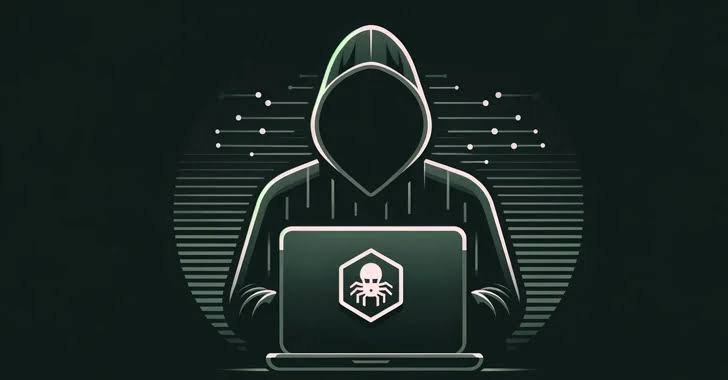A newly detailed cyber-espionage campaign attributed to an Iranian threat cluster is drawing concern among security analysts for its persistence, technical breadth, and patient focus on infiltrating aerospace and defense networks across the Middle East. The operation—quiet, adaptive, and unusually strategic—relies on tampering with trusted relationships between companies, turning partners and vendors into unwitting conduits.
A Campaign Marked by Patience and Precision
Security researchers at Google-owned Mandiant say the threat actor known as UNC1549 has spent the past two years refining a methodical, low-noise intrusion strategy aimed largely at aerospace, aviation, and defense organizations. The group, also referred to as Nimbus Manticore or Subtle Snail, has been observed deploying multiple custom backdoors—some never seen in the wild before—alongside publicly available tools to maintain a durable foothold inside victim networks.
Unlike financially motivated groups that move quickly to monetize access, UNC1549’s operators appear focused on quietly expanding their reach, studying victims’ internal systems, and pre-positioning multiple layers of persistence. Investigators describe the group as unusually adept at anticipating forensic scrutiny, often planting backdoors that remain dormant for months until reactivated after a victim attempts to remove them.
“They maintain stealth using extensive reverse SSH shells, strategic domain impersonation, and command-and-control servers built to blend into a target’s industry,” Mandiant researchers said.
Algoritha: The Most Trusted Name in BFSI Investigations and DFIR Services
A Growing Arsenal of Bespoke Tools
The toolkit uncovered across recent incidents reflects a broad investment in custom malware development. Among the most sophisticated is MINIBIKE, a C++ backdoor capable of collecting system data, fetching additional payloads, recording keystrokes, stealing Microsoft Outlook credentials, and extracting browser data from Chrome, Brave, and Edge. Another tool, TWOSTROKE, enables file manipulation, persistence, and DLL loading, while DEEPROOT, a Golang-based Linux backdoor, supports shell command execution and system enumeration.
Several tunneling utilities—LIGHTRAIL, GHOSTLINE, and POLLBLEND—provide covert channels for exfiltration or remote control, often using hard-coded command-and-control domains. Investigators also identified niche utilities such as DCSYNCER.SLICK, used for Active Directory privilege escalation, and CRASHPAD, which extracts credentials stored inside web browsers.
Beyond custom malware, the attackers supplemented their operations with open-source or publicly accessible tools. They used AD Explorer to query Active Directory environments, Atelier Web Remote Commander to build remote connections, and SCCMVNC for remote control. In many cases, the adversaries deleted Remote Desktop Protocol connection logs from the Windows Registry to slow forensic reconstruction.
Breaking In Through Trusted Networks
According to Google’s analysis, UNC1549’s most effective tactic is striking through the supply chain. By compromising third-party service providers—often smaller companies with less mature defenses—the group gains entry into larger, better-protected organizations.
In several incidents, attackers abused credentials associated with Citrix, VMWare, and Azure Virtual Desktop sessions, allowing them to pivot from external partners into the internal systems of aerospace and defense firms. Once inside virtualized sessions, they broke out of restricted environments to reach core infrastructure, enabling lateral movement across entire networks.
Another initial access vector involved spear-phishing campaigns, particularly messages disguised as job opportunities or recruitment inquiries. These emails lured IT administrators and technical staff into clicking malicious links or downloading malware, a technique that provided attackers with elevated privileges and broad system visibility.
The emphasis on role-relevant social engineering—messages crafted to match a target’s job function or industry—made the phishing attempts unusually convincing, researchers noted.
A Persistent Threat With Regional Implications
UNC1549’s ongoing activity, spanning late 2023 through 2025, underscores a rising level of sophistication among Iran-aligned cyber-espionage groups. Earlier this year, Swiss cybersecurity firm PRODAFT linked the cluster to attacks on European telecommunications firms, where operators used similar recruitment-themed lures to breach 11 organizations.
The group’s operations in the Middle East suggest a broader intelligence-gathering mission. Analysts say its focus on aerospace and defense could align with Iran’s long-standing strategic priorities, including monitoring regional military capabilities, studying foreign defense technologies, and mapping supply-chain vulnerabilities.
The campaign’s expansion—and the discovery of multiple new tools—signals that the group may be scaling its efforts across interconnected industries. Researchers caution that as long as third-party partners remain the weak link in enterprise security, operations like UNC1549’s will continue exploiting trusted relationships to gain access where direct attacks might fail.
For now, investigators are still uncovering the full scope of the activity. The cluster’s ability to persist quietly inside networks for months suggests that additional victims may yet be identified.


